
views
Changing Your Skin Care Routine
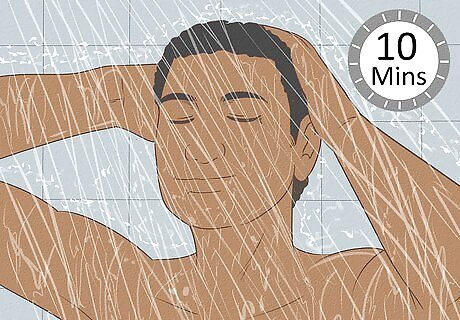
Take shorter showers or baths so you don't dry out your skin. While you might enjoy a long soak, spending too much time in the water actually dries out your skin. Try not to spend longer than 10 minutes in the shower or bath. This might not seem like a long time, but all you need to do is get in, wash up, rinse off, and hop out! Avoid showering more than once per day unless you’ve worked out or done other activities that made you sweaty. You don’t have to shower or bathe every single day, either. It’s fine to skip a day in between. Try shaving your legs or doing a deep-conditioning hair treatment before you even get in the shower to minimize how long your skin is exposed to the water. You can also dry-brush your skin before showering to encourage the turnover of surface skin cells and improve circulation. When you’re done showering, moisturize your freshly cleaned skin with coconut, jojoba, or olive oil.
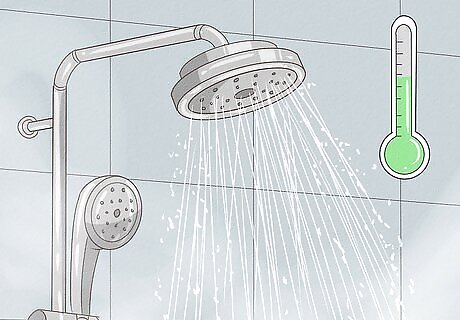
Use warm, not hot, water when you shower or bathe. Hot water sucks moisture from your skin, so avoid cranking your faucet up too high. Use water that’s pleasantly warm instead of scalding. Similarly, avoid soaking in a hot tub on a regular basis to keep your skin from drying out.

Avoid using scented skin products. Fragrances, dyes, and other chemicals commonly added to soaps, scrubs, and lotions won’t do your skin any favors. While they may smell or look nice, they actually dry out your skin. Opt for gentle, fragrance-free skin care products to keep your skin looking its best.Tip: Use unscented laundry detergent as well to prevent the chemicals left in the fabric from drying out or further irritating your skin.
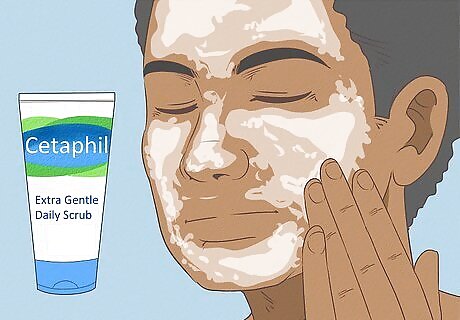
Exfoliate gently to remove dead skin cells. Exfoliating is a great way to smooth your skin. However, many scrubs can also strip the skin of moisture and irritate dry skin. Choose exfoliating products labeled as “gentle” and avoid scrubbing your skin harshly or using rough sponges or scrub brushes. Look for exfoliants with up to 2% salicylic acid or 10% glycolic acid. If you have sensitive skin, limit exfoliation to once or twice per week instead of every day.
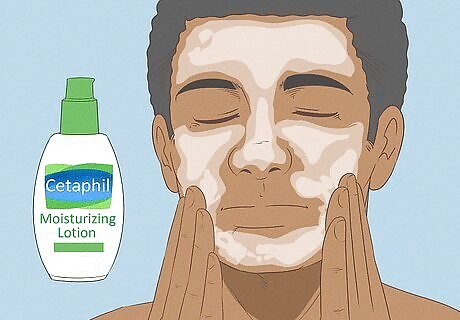
Moisturize when your skin is damp to seal in more hydration. After you wash your face or get out of the shower, pat off the excess moisture with a towel before applying your moisturizer. If your skin still feels dry, apply a second layer of moisturizer once the first layer has soaked in.
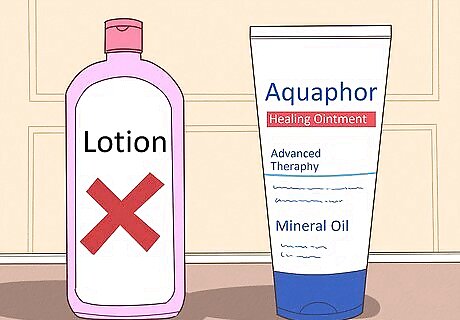
Use a cream or ointment rather than lotion. Despite all the marketing hype, lotion isn’t that effective at moisturizing your skin. Choose a cream or ointment with ingredients like shea butter, olive oil, or jojoba oil to replenish your skin with much-needed moisture. Look for a moisturizer that contains mineral oil, lanolin, glycerin, petrolatum, urea, and/or lactic acid.Variation: You can also use natural oils such as olive oil, almond oil, or coconut oil as your moisturizer. Simply apply a thin layer of the oil of your choice onto your skin, morning and night, for softer, smoother skin.
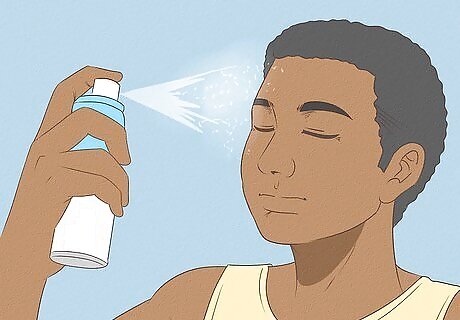
Spray thermal water on your dry skin. Water from thermal springs contains minerals that may help improve the health of your skin. Spraying it on your skin sparingly—for example, once or twice a day—can also help keep your skin moisturized. You can buy thermal water sprays online or at a pharmacy or beauty supply store. Avoid spraying thermal water on your skin too frequently. While it seems counterintuitive, wetting your skin too often can ultimately dry it out.
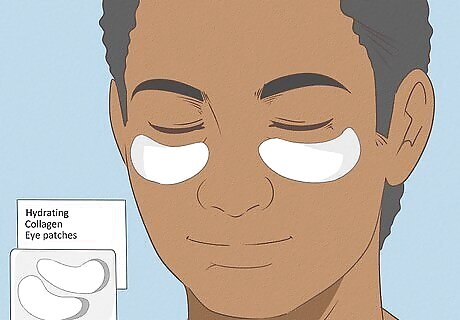
Treat dry areas on your face with collagen patches. Hydrating collagen patches can help moisturize dry spots and improve the overall appearance of your skin. Try placing the patches under your eyes or in any other places where you may need an extra boost of moisture, such as your forehead or the area around your mouth. You can purchase these patches online or from a beauty supply store. Follow the instructions on the package to determine how often you should use the patches and how long to leave them on.

Wear sunscreen on a daily basis. If you spend a lot of time outdoors, it's essential that you apply a cream or moisturizer that contains an SPF of 15 or higher. This will protect your skin from damaging sun rays, which cause burns, sun spots, and wrinkles. Remember that you can burn your skin all year round, so sunscreen isn't just for summer!
Adjusting Your Environment

Use a humidifier to prevent dry air in your home. If the air in your home is very dry, it could be contributing to your dry skin, leaving it feeling rough and flaky. To counteract this effect, try putting a humidifier in your living room and another one in your bedroom. Use a cool-air humidifier, even in the winter. Use filtered or distilled water in your humidifiers to prevent minerals from building up inside them.

Keep your heat and air conditioning on low. Forced air from the furnace and air conditioner really dry out your home, leading to drier skin. Even though you may be tempted, avoid turning the heat up above 68 °F (20 °C) in the winter. If you feel cold, put on warmer clothes or cozy up under a blanket. In the summer, set your thermostat to 78 °F (26 °C) when you’re away and turn on the A/C only when you’re at home.Tip: As an added bonus, you’ll save energy and lower your utility bills!

Protect your skin from the elements. In winter, protect your skin from drying winds by wearing hats, scarfs, and gloves. Wear a protective lip balm to shield your lips. In summer, wear a baseball cap or sunhat to protect your face from the sun’s harsh rays, and wear loose, light, long-sleeved shirts and pants to prevent your skin from burning.

Limit how often you swim in chlorinated water. Chlorine and other pool chemicals can strip your skin of moisture. Try to avoid swimming in chlorinated water frequently. When you do go swimming, shower once you get out of the pool and don’t forget to apply a moisturizer!
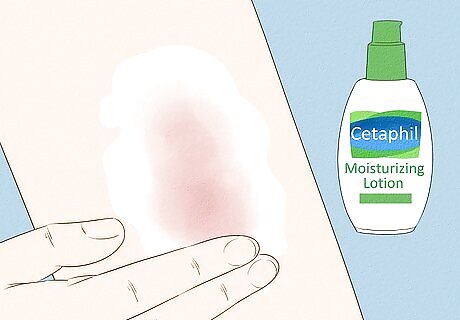
Treat itchy skin with moisturizer and other creams. Dry skin often leads to itchy skin, but scratching can make dry skin worse and even cause damage. Sometimes, moisturizing alone will help to ease any dry-skin related itchiness, but if you need some extra relief, try hydrocortisone cream or over-the-counter anti-itch lotion.
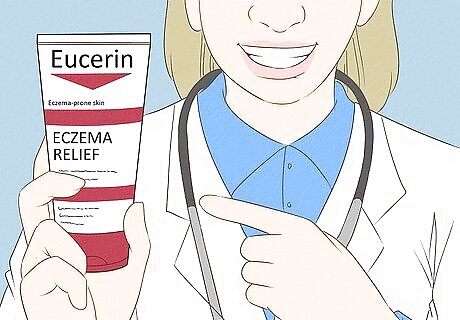
See a dermatologist if necessary. If you’ve taken steps to treat your dry skin and don’t see results within a few months, it might be helpful to get advice from a dermatologist, or skin specialist. Similarly, if you have any concerning symptoms of eczema, rosacea, or other skin problems, schedule an appointment. A dermatologist can also recommend skin products based on your specific skin type.
Nourishing Your Body from the Inside

Incorporate more fresh fruits and vegetables into your diet. A healthy, balanced diet will help provide the vitamins and nutrients that your body, and skin, need to stay hydrated. Try to eat at least 2 portions of green, leafy vegetables and 2 portions of seasonal fruits daily. Fruit and veggies with a high water content, such as watermelon, broccoli, and tomatoes, are especially good for hydration.
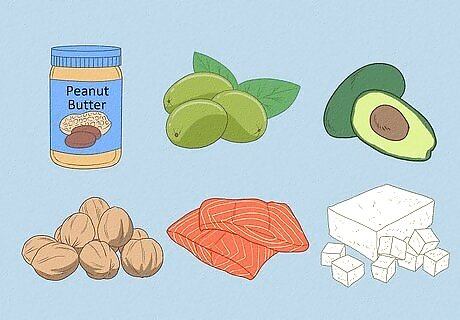
Eat healthy fats to give your skin the nutrients it needs. Eating foods containing good types of fat contribute to the body's overall health, increasing blood flow and the delivery of nutrients to all the body's cells, including the skin. Try to eat more foods containing monounsaturated fat, such as avocados, olives, and peanut butter, and foods containing polyunsaturated fats, such as salmon, walnuts, and tofu.

Cut back on salty and fried foods, which can dehydrate your skin. Limit your intake of these foods as much as possible to avoid dehydration and benefit your overall health. While you don't have to completely cut out salty or fried foods, try replacing potato chips or other snacks with healthier options once or twice a week.
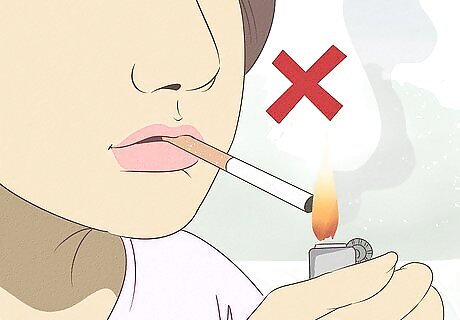
Quit smoking if you can. The negative side effects of smoking are well-documented, but you may not know that smoking is also bad for your skin. The tar contained in cigarettes clogs the pores, leading to blackheads and breakouts. Smoking hampers your breathing ability, which inhibits circulation and deprives the skin cells of oxygen. Smoking also depletes the tissues of vitamin C, which is essential for healthy-looking skin.

Detox your liver. When your liver is overworked, it can cause a variety of skin problems, including itching and dryness. To help perk up your skin, give your liver a break by drinking plenty of water and other liver-friendly beverages, like green tea and fruit juice. You can also promote liver health by eating a variety of fresh fruits and vegetables, including leafy greens, garlic, avocados, nuts, and grapefruit. Additionally, ask your doctor about supplements that may support liver health, such as milk thistle or SAMe. Talk to your doctor if you’re concerned that you might have a liver condition.

Limit your alcohol intake since alcohol dehydrates your body and skin. Alcohol decreases the body's ability to absorb fluids, leading to a loss of water, electrolytes, and minerals. This causes dry, red, easily irritated skin. Try to drink alcohol in moderation, and when you are drinking, have a glass of water between drinks.
Trying Home Treatments
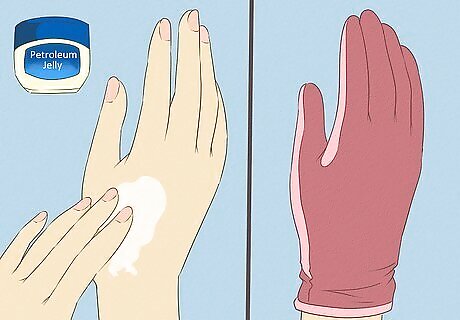
Moisturize with petroleum jelly overnight. Petroleum jelly is very emollient and actually forms a barrier that prevents moisture from evaporating from the surface of the skin. It is also a cheap option for treating dry skin on a budget.Tip: You can even apply petroleum jelly to sensitive areas like your eyelids and lips. As petroleum jelly can be thick and sticky, it may be best to apply it at night. Try dampening your skin, putting on a layer of your regular moisturizer, then applying a thin layer of petroleum jelly to seal everything in. To heal dry skin on your hands and feet, coat them in a layer of petroleum jelly before bed. Put on cotton gloves and socks to promote absorption and prevent the jelly from rubbing off on your sheets. Your skin will be supple and moist in the morning.

Try an avocado face mask to rejuvenate your skin. You can either purchase an avocado face mask in a store or make your own to take advantage of the oils and minerals that will help rehydrate and rejuvenate your skin. Mash up 1 fresh, ripe avocado, then add in 1 tablespoon (15 mL) of organic honey, 1 tablespoon (15 ml) of olive oil, and 2 teaspoons (9.9 mL) of plain yogurt. Smear this creamy skincare recipe on your face and neck. After 10 minutes, wash off the mask with cool water to reveal super-nourished skin.
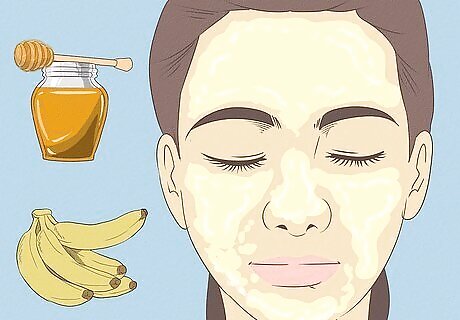
Mash up a banana and spread it on your skin. Banana can rejuvenate dry skin, making it soft and supple. Mash up half of a banana in a bowl and spread it onto your face and neck. After 5 to 10 minutes, rinse it off with lukewarm water. To increase the effectiveness of this facial mask, you can add 1 teaspoon (4.9 mL) of honey to the banana.
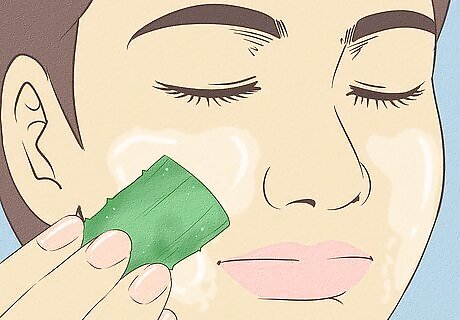
Use aloe vera to rehydrate and reduce redness and inflammation. Break off a leaf from an aloe vera plant and rub the clear, sticky sap all over your skin. Leave it on for 15 minutes, then rinse it off. For best results, apply an aloe mask once or twice a week. Try growing your own aloe so you always have some on hand.

















Comments
0 comment